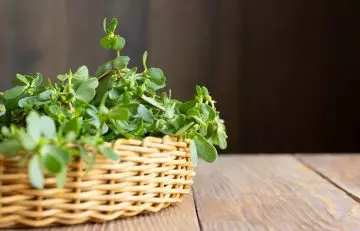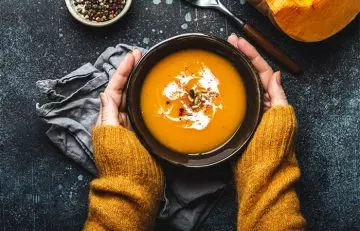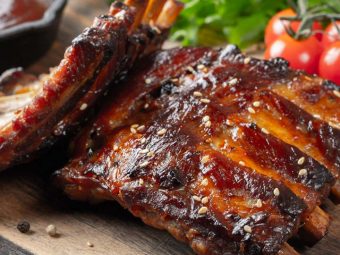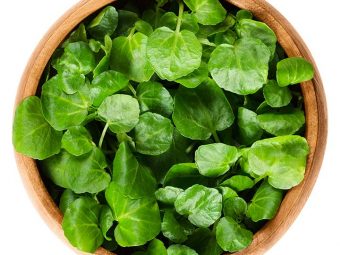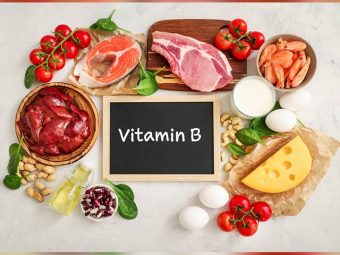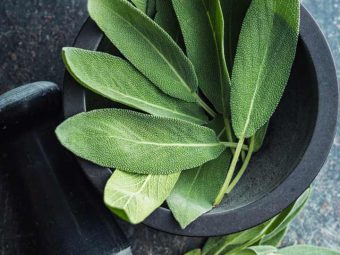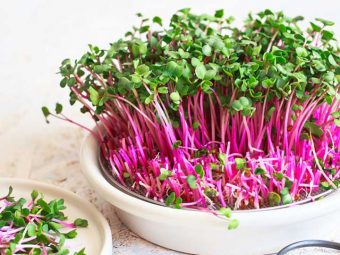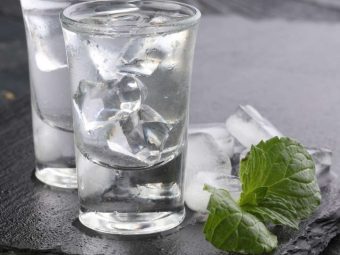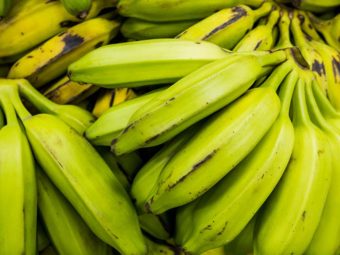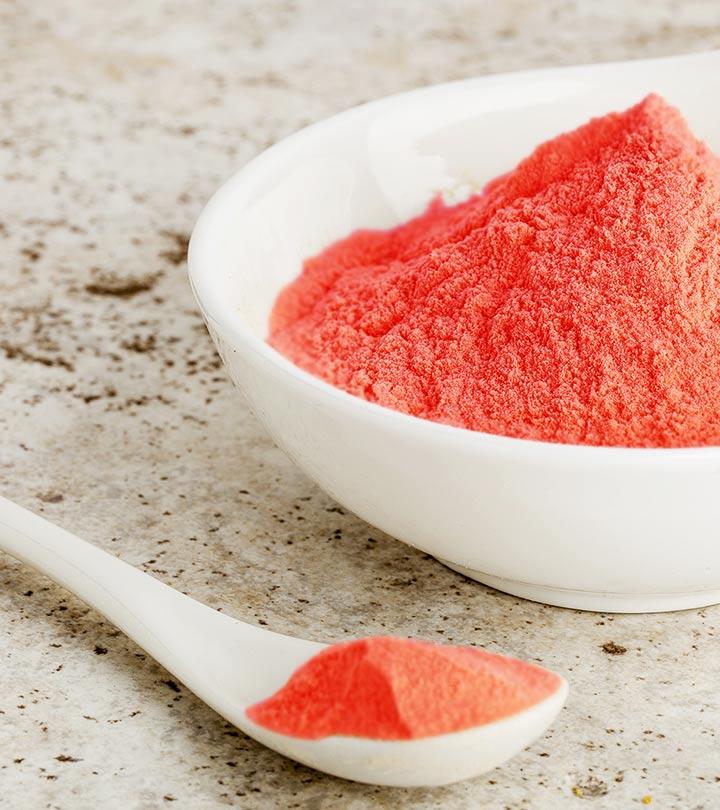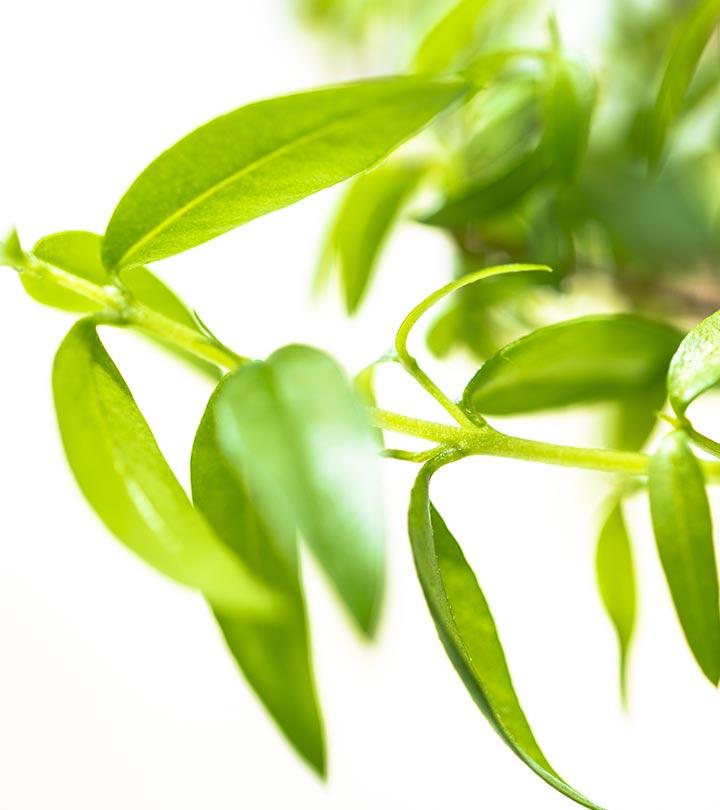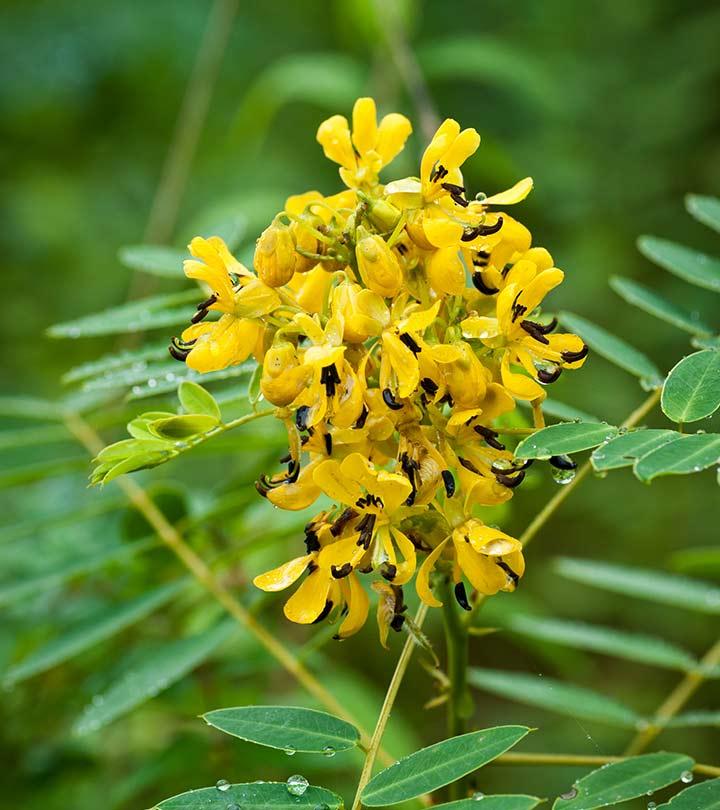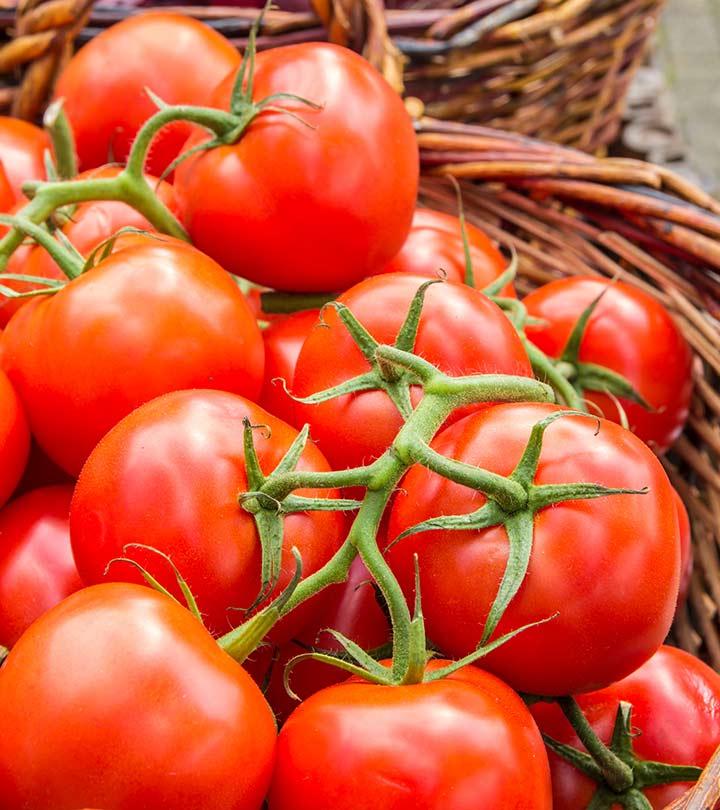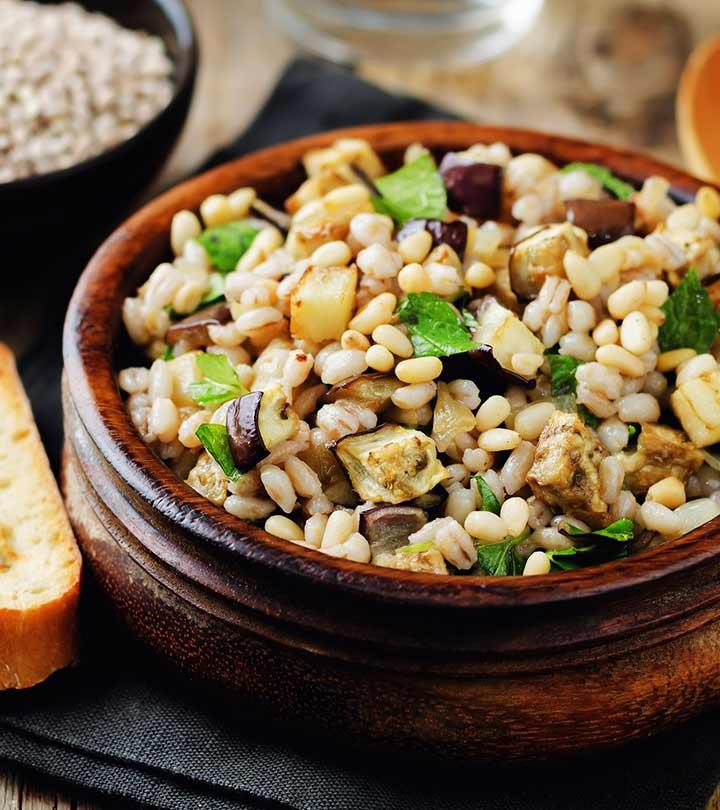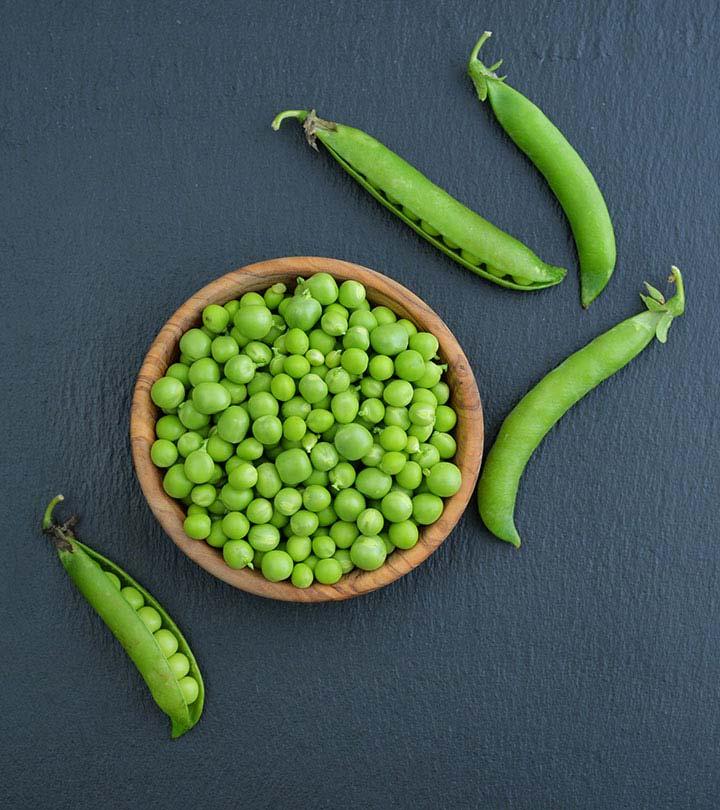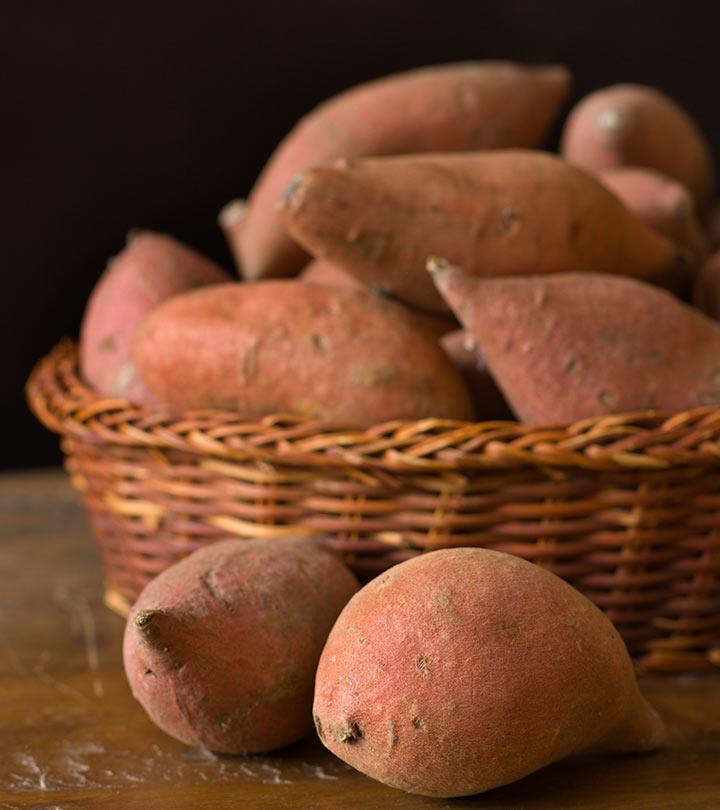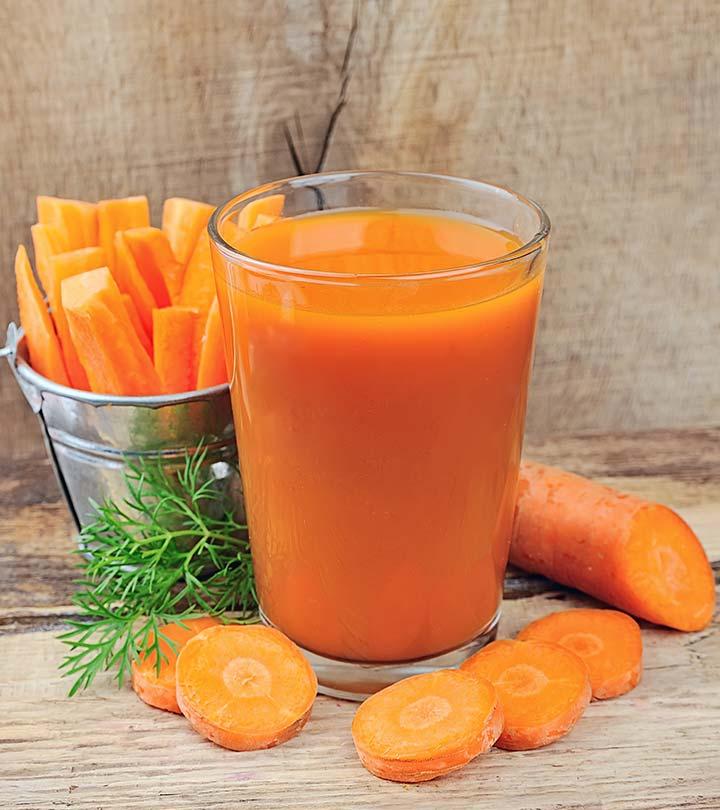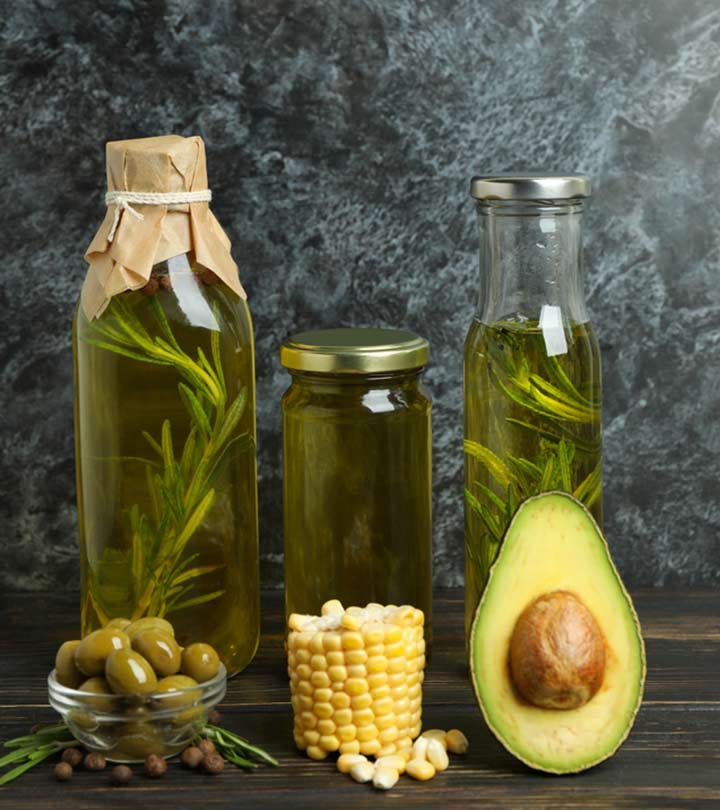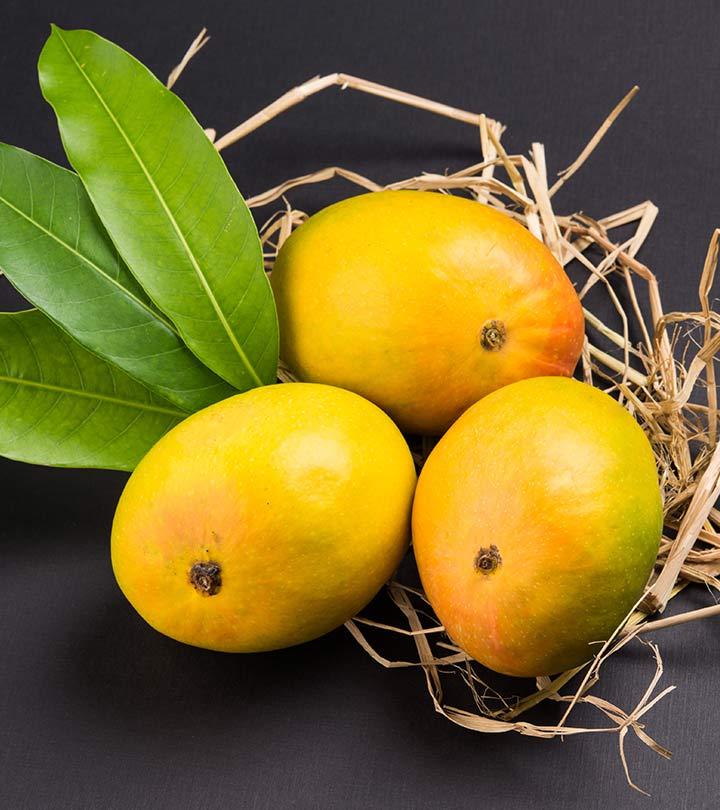Purslane Benefits And Side Effects: A Comprehensive Guide
From improving your heart health to improving your sleep – this veggie can do wonders.

Image: Shutterstock
Purslane is an edible weed packed with essential nutrients. The many benefits of purslane can be attributed to its omega-3 fats, antioxidants, and vitamins. If you are a bit adventurous and need something to tweak your diet, purslane is the right choice! It is a versatile vegetable that can be eaten with anything. Be it in your favorite salad or in your favorite sandwich, it can be a good replacement for the regular old lettuce. A change in flavor will encourage you to get more experimental with your food and purslane will definitely help you with that. Lettuce get out of the way! Purslane is your new best friend.
Now, let us delve deeper into what purslane is, what its benefits are and how it can be incorporated into our daily diet.
 Know Your Ingredient: Purslane
Know Your Ingredient: PurslaneWhat Is It?
A common weed, also called little hogweed, known for its nutritional and medicinal value.
What Are Its Benefits?
It may aid heart health, digestion, the immune system, bone development, wound healing, and skin, mucus membrane, and eye health. It has antioxidant and anti-inflammatory properties.
Who Can Use It?
Those looking to improve skin and sleep health, regulate blood pressure levels, aid nervous system functioning, lose weight, and manage oral lichen planus.
How Often?
One can consume a limited or prescribed amount of purslane every day.
Caution
Those with high levels of oxalate should avoid it. Excessive consumption may increase the risk of developing kidney stones.
In This Article
What Is Purslane?
Purslane plant is an edible plant weed that grows naturally in gardens and fields (1). It is scientifically known as Portulaca Oleracea and belongs to the family Portulacaceae. It is also known as pigweed or little hogweed. Although the purslane plant is distributed all over the world, it is native to the Middle East and North Africa. It is a versatile plant that can grow anywhere. Be it tropical or temperate regions, purslane can grow at any temperature around the world. How would you recognize purslane? It is pretty easy. Purslane has a red stem with small green leaves, giving it a nice and rounded look. Due to its large water-storing capacity, purslane can thrive even in the hottest temperature. It is a plant that has been used for thousands of years due to its nutritional value and medicinal properties.
 Trivia
TriviaNow that we know what purslane is and where it originated from, let us see the different nutrients that it provides.
Purslane Nutrition Facts
Just like its leafy companions— spinach and lettuce, purslane benefits us in many ways. It is power-packed with nutrients that are essential for our body. Some of these nutrients are:
- Omega-3 Fatty Acids – Did you think that fish was the only source of omega-3 fatty acids? No! Purslane is a very rich source of Alpha Linoleic Acid (2). It is a type of omega-3 fatty acid that is essential for bone and growth development in humans. A study was conducted to compare the amount of omega-3 fatty acids in purslane and wild spinach. The results showed that purslane has a higher amount of omega-3 fatty acids than spinach. This proves the high nutritional value of purslane (3).
- Antioxidants – Antioxidants are substances that are beneficial in reducing cell damage caused by free radicals and they improve your immune system. Green leafy vegetables such as our pal, the purslane plant, are filled with antioxidants. A study was conducted to see the effect of purslane juice in rats and the researchers checked the levels of nitric oxide and lipid peroxidationi XA chain reaction of free radicals harming the cell membranes by altering the unsaturated fatty acids. levels in the for the same. The results showed a significant improvement in the inhibition of the levels of nitric oxide and lipid peroxidation which proves that purslane is high in antioxidants (4).
- Vitamin A – Purslane, also known as verdolagas, benefits us by providing vitamin A. This vitamin is essential for good eyesight, skin, and healthy mucus membranes in our body (1).
- Vitamins B And C – Along with being a good source of vitamin A, purslane is also a vegetable high in vitamins B and C. Vitamin C is essential for healthy skin and healing wounds (6). Vitamin B is essential for building a healthy nervous system (7).
Hilda, a blogger, writes in one of her posts that while experimenting with pesto-making, she discovered the underappreciated treasures of mint and purslane, both thriving near her doorstep: “If you are not familiar with purslane, it is one of the gems of the weed world. It contains, among many other nutrients, omega 3 fatty acids which makes it a good addition to a vegetarian diet (i)”.
You can see that purslane is a powerful plant that comes packed with a multitude of vitamins. Let us look into the benefits that purslane provides.
Health Benefits Of Purslane
There are several health benefits of eating purslane that are essential for a healthy body. They are:
- Lowers Risk Of Developing Heart Diseases – The lifestyle that we lead today has forced many of us to develop cardiovascular diseases at a younger age. Researchers conducted a study to understand the effect of freeze-dried purslane supplements in adults with cholesterol. Blood tests taken at the end of every two weeks showed that the total cholesterol levels had decreased. It shows that purslane is beneficial for reducing the risk of developing heart diseases (8).
- Gives You Great Skin – Do you want beautiful and glowing skin? JesseFeder, Clinical Dietitian at the Memorial Regional Hospital South, says, “Purslane has very healthy omegas, antioxidants, and nutrients that contribute to healthy-looking skin and anti-aging properties.”
Purslane has a high content of antioxidants which makes it extremely beneficial for skin health. Antioxidants are important for the production of collagen and collagen helps in reducing wrinkles and maintaining the elasticity of your skin. Thus proving that purslane benefits you in more than one way (9).
- Helps You Shed The Extra Pounds – Yes, you read that right. Our leafy friend, purslane, helps you shed those extra pounds. Research shows that including purslane in your diet every day can help decrease your weight (10). Along with that, it reduces the levels of cholesterol and triglycerides and helps with metabolism.
- Reduces The Level Of Blood Pressure – Looking for food that can help you reduce your blood pressure? Experts conducted a study on people with type-2 diabetes. They were given purslane seeds with yogurt for five weeks. The results showed that there was a significant reduction in the blood pressure level (11). Along with this, there was a decrease in the level of body weight and fat levels. This proves that purslane is a powerful plant that has many benefits.
- Reduces Inflammation – Purslane seeds contain anti-inflammatory properties, and eating them every day has been shown to reduce cytokinesi XSmall proteins that develop and control the blood cells and enable the immune system to function properly. . These are substances that control inflammation in our bodies (12).
- Helps In Managing Oral Lichen Planus – Oral lichen planus is a condition that affects the mucous lining in your mouth. Your mouth develops symptoms such as swelling, white patches, and redness. Researchers conducted a study where patients diagnosed with oral lichen planus were given purslane for three months. The test results showed that it was effective in reducing severity of the symptoms of oral lichen planus (13).
- Aids Better Sleep – Purslane is a good source of naturally occurring melatonin, a hormone responsible for sleep. You can add purslane to salads or soups to aid good sleep.
You can reap these benefits more often by incorporating purslane into your daily diet. The following purslane recipe is a good start – it is simple and quite delicious. Check it out.
Easy Purslane Recipe
Purslane and Chickpea Stew
Ingredients
- 2 cups of fresh purslane, washed and chopped
- 150 grams of chickpeas, drained and rinsed
- 2 cups of water
- 1 onion, chopped
- 2 cloves garlic, minced
- 2 diced tomatoes
- 1 teaspoon of cumin
- ½ teaspoon of paprika
- Salt and pepper, to taste
- 2 teaspoons of olive oil for sautéing
How To Prepare
- Heat olive oil in a pot over medium heat. Sauté the chopped onion and garlic until soft.
- Add cumin and paprika and sauté for another minute.
- Stir in the chopped purslane, chickpeas, and diced tomatoes.
- Add water and salt and pepper to taste.
- Simmer for 15 to 20 minutes.
- Serve it hot.
While purslane provides a variety of medical benefits with a unique taste, and is a good alternative to spinach and lettuce, it also comes with its own set of side effects. Let us read further to find out what they are.
Purslane – Side Effects
Just like every other food, over consumption of anything is bad for your health. Surprisingly, current research shows that the only side effect of eating purslane is that it can lead to the risk of developing kidney stones. Purslane contains oxalate that can lead to the development of kidney stones. Purslane or any vegetable high in oxalate reduces the absorption power of calcium which can lead to calcium deficiency in your body (14). Women are at higher risk of developing calcium deficiency due to the high oxalate content in their bodies (15).
As seen in this section, purslane comes with very few side effects that are harmful to you. Why don’t we go ahead and see whether you can consume purslane or not?
Who Should Not Eat Purslane?
How do you know if you can eat purslane? Studies have shown that people who have high levels of oxalate should not consume purslane. Purslane and other leafy vegetables have high levels of oxalatesi X (15). It can contribute to the formation of stones in your urinary tract and kidneys. People who are prone to developing kidney or urinary tract stones should avoid eating purslane. But if you love purslane and want it, then you can combine it with yogurt. Studies show that combining purslane with yogurt or coconut products reduces the level of oxalates in your body (16).
If you are one of those people who have urinary tract stones and kidney stones, then you are advised to not consume purslane. But if you still want to try, eat it with coconut or yogurt. Let us see if purslane is a vegetable that we can eat raw or not.
Can You Eat Purslane Raw?
Purslane is a versatile, leafy vegetable that can be eaten raw or cooked. Purslane has a salty and slightly sour taste that can add that extra kick to your salad. Crunchy purslane can be eaten with your sandwiches. It can be incorporated into your soups as well on a winter night.
 Quick Tip
Quick TipThey also add it to salads, boil it, or use it in chicken casserole.
Now that you know that purslane is the perfect alternative to lettuce and can be eaten raw with any of your favorite dishes, let us answer the question on your mind— “ How much purslane can I eat every day?”
How Much Purslane Should I Eat Every Day?
There is no set amount of purslane that can be consumed daily. One study showed that giving three pills of purslane extract every day decreased systolic blood pressurei XThe component of measuring blood pressure that accounts for the force that each heartbeat exerts on the artery walls. (17). Another study was conducted on overweight adolescents to see the effect of purslane on cholesterol levels. The adolescents were administered 500 milligrams of purslane seeds every day twice a day for one month. The results showed that there was a considerable reduction in cholesterol levels. Given the findings in research, it can be concluded that you can consume purslane in a limited amount every day (18).
Infographic: How To Select And Store Purslane
Purslane is a nutritious veggie found all over the United States. Yet, most roadwalks hide this undiscovered gem whose rich nutritional profile shines through, just waiting for you to pick it up.
Check out the infographic below to learn how to properly pick and store purslane so that you can reap all its benefits. Illustration: StyleCraze Design Team
Purslane has been used as traditional medicine and is an edible weed with a rich nutritional profile. The many benefits of purslane can be attributed to its wide variety of vitamins and minerals, omega-3 fats, and antioxidant composition. The intake of this weed may help lower the risk of developing heart diseases, improve skin elasticity, aid in weight loss, reduce blood pressure levels, and decrease inflammation. However, overconsumption of purslane may cause some side effects. For example, it may lead to kidney stones and calcium deficiency. In addition, people with kidney and urinary tract stones should avoid intake of this weed. Hence, consume it in moderation to enjoy its benefits and consult your doctor in case of any emergencies.
Frequently Asked Questions
Does purslane decrease the risk of cancer?
According to Jesse Feder, “Purslane is full of antioxidants, specifically beta-carotene, that can help decrease the risk of cancer in people.”
Is purslane good for the brain?
Yes, it is one of the best superfoods to consume. Purslane is rich in iron, vitamins A and C, and minerals like calcium, phosphorus, and omega-3 fatty acids.
Is purslane a superfood?
Yes. Purslane is rich in iron, vitamins A and C, and minerals like calcium, phosphorus, and omega-3 fatty acids.
How to cook purslane?
Wash the purslane bunch and remove all dirt and impurities. You can eat it raw and cooked, add in salads and use it as toppings.
Is purslane good for the liver?
Yes. Purslane has hepatoprotective properties and improves the levels of liver enzymes (19).
Is purslane good for hair growth?
It may help maintain hair health as purslane contains omega fatty acids that may help boost hair growth and density (20).
Key Takeaways
- Purslane is packed with essential nutrients like omega 3, vitamin A, B and C and is a rich source of antioxidants.
- Purslane may support your heart health, aid in sleep, help you to lose weight, reduce inflammation and blood pressure and fight against oral lichen planus.
- Purslane is high in oxalates, so people prone to kidney stones should avoid consuming it in high quantities.
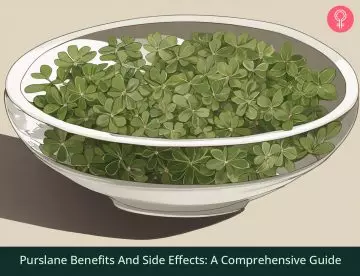
Image: Stable Diffusion/StyleCraze Design Team
Purslane is a nutritious and delicious green vegetable with many health benefits. Learn about its nutrition facts with this video and how to incorporate it into your diet. Take a look now!
Personal Experience: Source
StyleCraze's articles are interwoven with authentic personal narratives that provide depth and resonance to our content. Below are the sources of the personal accounts referenced in this article.
i. Mint and purslane pestohttps://alongthegrapevine.wordpress.com/2015/09/11/mint-and-purslane-pesto/
References
Articles on StyleCraze are backed by verified information from peer-reviewed and academic research papers, reputed organizations, research institutions, and medical associations to ensure accuracy and relevance. Read our editorial policy to learn more.
- Purslane Weed (Portulaca oleracea): “A Prospective Plant Source of Nutrition” “Omega-3 Fatty Acid” and Antioxidant Attributes
https://www.hindawi.com/journals/tswj/2014/951019/ - Purslane weed (Portulaca oleracea): “A Prospective Plant Source of Nutrition” “Omega-3 Fatty Acid” and Antioxidant Attributes
https://www.ncbi.nlm.nih.gov/pmc/articles/PMC3934766/ - Common purslane: a source of omega-3 fatty acids and antioxidants
https://pubmed.ncbi.nlm.nih.gov/1354675/ - Antioxidant effect of purslane (Portulaca oleracea) and its mechanism of action
https://academicjournals.org/article/article1380550022_Dkhil%20et%20al.pdf - Purslane – The Gourmet Weed
https://newdrugapprovals.org/2013/12/10/purslane-the-gourmet-weed/ - Vitamin C
https://www.nhs.uk/conditions/vitamins-and-minerals/vitamin-c/ - B Vitamins And Folic Acid
https://www.nhs.uk/conditions/vitamins-and-minerals/vitamin-b/ - Evaluating The Effects Of Freeze-Dried Supplements Of Purslane (Portulaca oleracea) On Blood Lipids In Hypercholesterolemic Adults
https://academicjournals.org/journal/IJNAM/article-abstract/9250CC14803 - Purslane In Cosmetics: A Review
https://www.ijsr.net/archive/v7i11/ART20193014.pdf - Influence Of Sage (Salvia Officinalis L.) And Purslane (Portulaca Oleracea L.) On Weight Reduction And Some Biochemical Parameters In Rats Suffering From Obesity
https://ejnh.journals.ekb.eg/article_4807_18767eaa9d77894c5a03171e9514ebff.pdf - The effect of purslane seeds on glycemic status and lipid profiles of persons with type 2 diabetes: A randomized controlled cross-over clinical trial
https://www.ncbi.nlm.nih.gov/pmc/articles/PMC4354065/ - Effect of purslane seed supplementation on inflammatory cytokines oxidative stress and muscle damage in response to high-intensity intermittent exercise in national athlete runners
https://link.springer.com/article/10.1007/s11332-019-00572-y - Efficacy of purslane in the treatment of oral lichen planus
https://pubmed.ncbi.nlm.nih.gov/19585472/ - Oxalate content of raw and cooked purslane
https://www.researchgate.net/publication/268439013_Oxalate_content_of_raw_and_cooked_purslane - Oxalate content of foods and its effect on humans
https://pubmed.ncbi.nlm.nih.gov/24393738/ - Oxalate content of purslane leaves and the effect of combining them with yogurt or coconut products
https://www.sciencedirect.com/science/article/abs/pii/S0889157509000842 - Purslane Extract and Glucose Homeostasis in Adults with Type 2 Diabetes: “A Double-Blind” Placebo-Controlled Clinical Trial of Efficacy and Safety
https://pubmed.ncbi.nlm.nih.gov/26854844/ - Clinical Effects of Portulaca Oleracea Seeds on Dyslipidemia in Obese Adolescents: a Triple-blinded Randomized Controlled Trial
https://www.researchgate.net/publication/262718128_Clinical_Effects_of_Portulaca_Oleracea_Seeds_on_Dyslipidemia_in_Obese_Adolescents_a_Triple-blinded_Randomized_Controlled_Trial - Hepatoprotective effects of Portulaca oleracea extract against CCl4-induced damage in rats
https://pubmed.ncbi.nlm.nih.gov/25472695/ - Effect of a nutritional supplement on hair loss in women
https://pubmed.ncbi.nlm.nih.gov/25573272/






